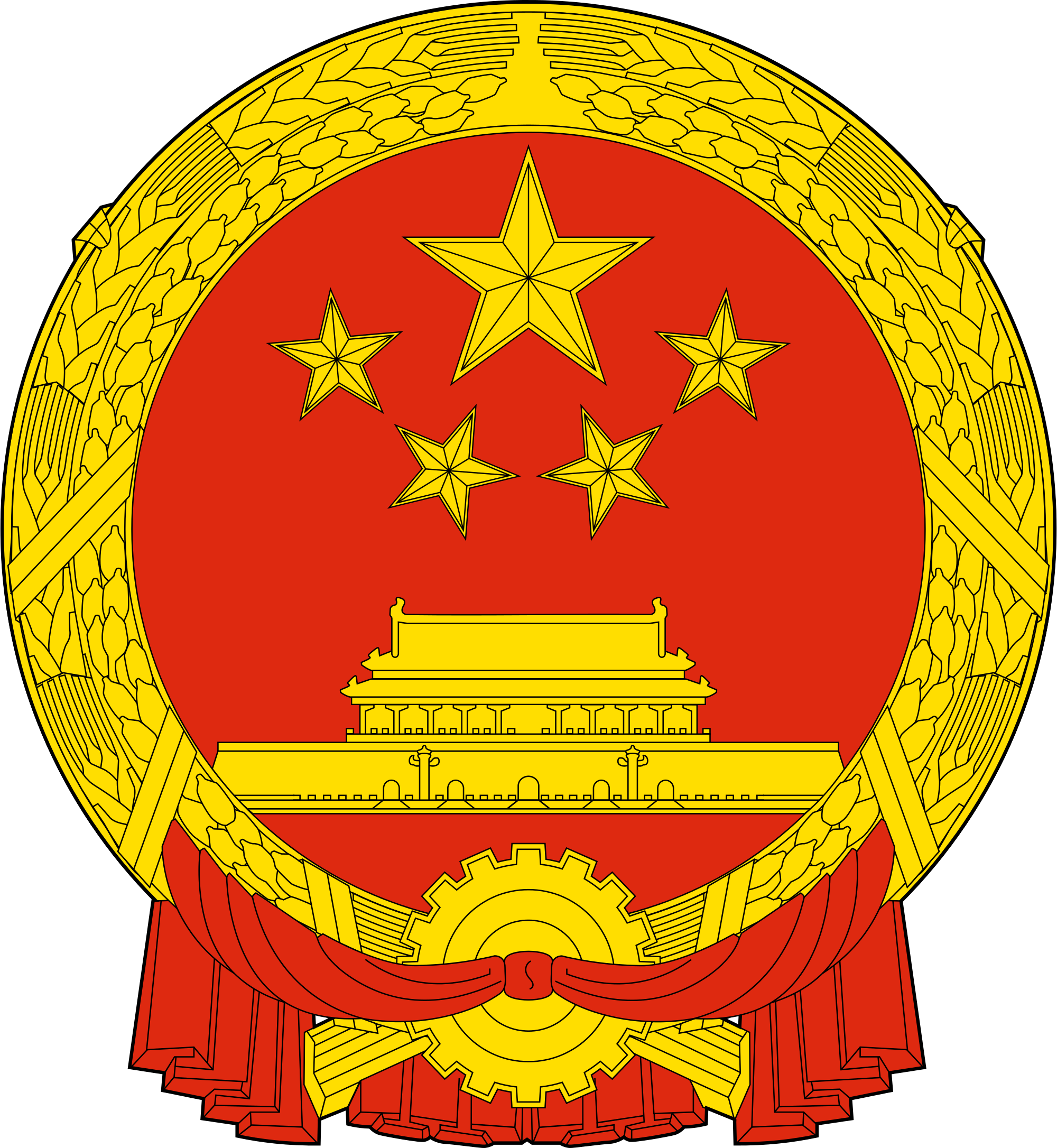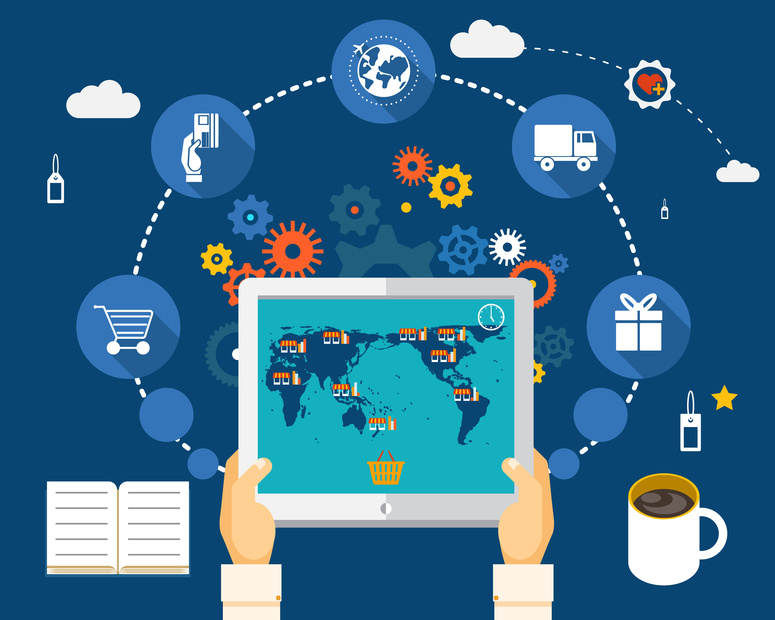How to take advantage of the latest E Commerce revolution? U-Commerce trend
Nowadays, we all are very well aware of the importance of Ecommerce on current business.
E-Commerce has been a great revolution for companies and customers, helping the exchange of goods and services without geographical barriers via Internet.
With most of famous brands selling via e-Commerce and the development of B2B, B2C and C2C markets, the last revolution has come to stay: the Mobile Commerce or better known, M-Commerce.
But, What do we mean when we talk about M-Commerce?
The increase of the usage of smartphones and tablets and the growth of its capabilities, lead to a higher percentage of the population using technological devices to purchase their goods or services. According to the increase of the demand and in order to take advantage of this new trend, Companies have already identified the need to adapt their ways of selling to the portable devices.
China, the biggest consumer via E-Commerce country and a technologically advanced market, is a good example to put into consideration: the Retail and C2C ecommerce sales have grown from the 9% to the 55.5% since 2013.
This information show us that nowadays, most of the C2C Chinese customers prefer to use the mobile device than their PCs or laptops.
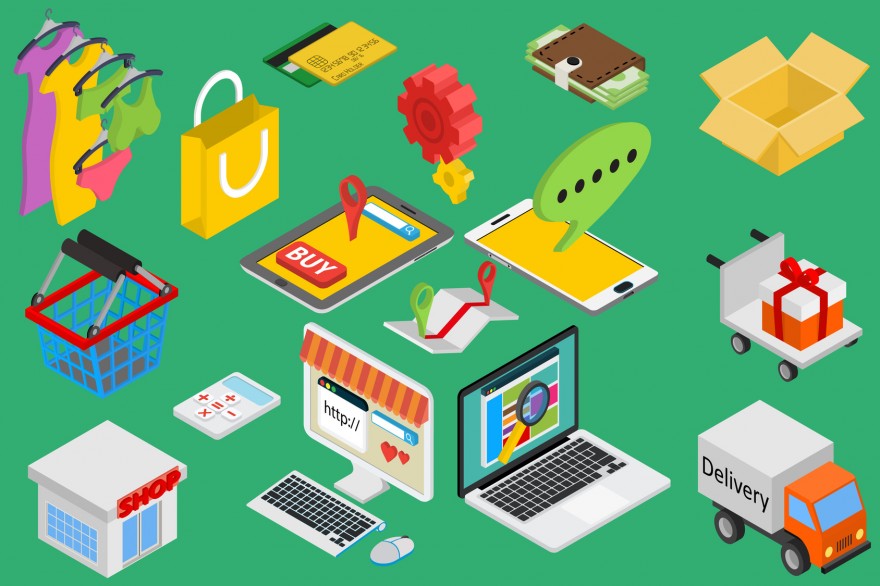
Omnichannel Marketing, What´s its purpose?
At the same time, to E-Commerce has joined a new feature: the existence of the multichannel approach to sales, or “Omnichannel”.
This channel is looking for the continuous shopping experience of each customer. The aim of the Omnichannel Marketing is offering a continuous experience to the user, independent from the device or channel chosen.
In practice, this leads to a complete integration between phones, tablets and computers and it requires the combination of an anthropological and technological strategy in approaching the users in a smarter way.
From the combination of all this, arises the U-Commerce concept.
What is U-Commerce or Ubiquitous Commerce?
If we simplify, we would say that we are talking about U-Commerce when E-Commerce is based in the customer experience.
The user must be in the center of all Companies’ strategies. Those Companies using U-Commerce must be able to provide personalized service to their clients from the information they get from mobile devices and PC-s.
The keys are: customizing and navigation experience created in cooperation with the User.
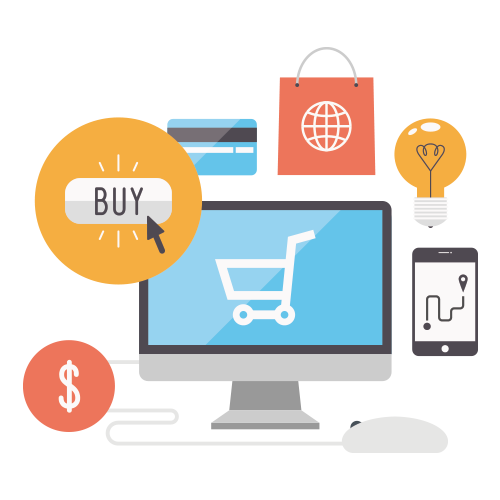
How is this possible?
It is obvious that the technological development is responsible for this change and makes necessary to pay attention to the internal customer databases.
Companies must try to find out common interests between potential clients who visit their EShops, considering each potential customer as unique and with their own preferences and priorities.
Efforts should be directed to avoid high rates of leads who finally give up navigating in the last purchasing phase, and reach around 60-70%.
This is the crucial reason for companies to invest their efforts and resources in understanding the customers and their behavior: to boost sales.
A lack of privacy: How companies use data?
U-Commerce uses personal information in order to provide a personalized service. A big number of customers feel disrespectful that a company can get their personal information and manage it as they want. Therefore, we must emphasize the benefits that the data can bring to the user and treat delicately the data we are able to collect.
Times are changing and the number of E-Commerce consumers is increasing exponentially and also the M-Commerce is growing very fast.
It’s important to face it and consider user’s needs, their preferences and desires. So companies must rechange strategies and adapt to the new eCommerce “revolution”.
Are you thinking about improving the user experience and exploit the advantages that the use of Online Marketing gives us?
Come to us, We are expecting you!
This article has been edited by Paula Vicuña, from 2 OPEN.
Tencent and JD Launch Targeted Brand Advertising on WeChat
From the association of Tencent –owner of the biggest social platforms in China- and JD.com –the leading online direct sales company in the country-, has emerged a new conception of Marketing and Brand Advertising.
In 2016 in Beijing, both released a plan based on Ecommerce marketing service called “J&T Plan”.
The new policy was aimed to provide a tool to accurate a better portrait of the potential user, and improve the interaction with the consumer.
As a result, users data has become extremely valuable for any company:
Knowledge is power, more than ever.
What are their main Goals?

The aspiration of Tencent and JD.com partnership has been to provide a pleasant and high quality service to their users.
To reach its purpose, they have focused on three main objectives to strength its business on mobile and Internet, such as:
- Mobile access points
- Traffic support
- Ecommerce activities
Their desire to turn the user into the protagonist of the new Marketing, has launched a new approach based on three main ideas:
- Multi-dimensional user insight
- Effectiveness analysis
- Precision target audience
What do they want in Return?

Not only a commitment to the future and an advantage over its competitors, their relationship also give them some specific advantages:
JD.com obtains a stake in Yixun, PaiPai C2C marketplace businesses, logistics personnel and assets and QQ Wanggou B2C.
On the other hand, Tencent will offer level one access points in Weixin and Mobile QQ and support from other key platforms to JD.com.
In order to provide a better online shopping experience, they will also work together on providing solutions to online payment services and an overall digital marketing solutions.
If you are thinking on improving your company services, before starting a Business and Marketing Plan you should take in consideration some basic recomendations:
Build a well-aimed portrait of the users, improve brand experience with the client, and enhance technological tools to achieve it, have become the three key factors to consider on any approach to potential customers, and the best guarantee for the future of your company.
From 2 OPEN we have conformed a team capable of responding to new challenges and specialized on Business Intelligence. We can help you to deal with the new Marketing and Ecommerce trends.
Come with us. Together we will reach your company goals.
This article was edited by Paula Vicuña from 2 OPEN.
How to optimize traffic within 1688.COM to obtain leads?
Interested in the B2B market? This article is for those currently interested in launching a B2B ecommerce initiative!
Following our instruction of How to Sell B2B Online in China, from 2 OPEN we will guide you on the most famous Chinese B2B platform –1688.COM, to obtain leads for your company, giving you the basic information to learn how to deal with traffic.
In order to develop your sales in a business-to-business, it is important to analyze which actions can be done to improve your company results.
From 2 Open, we have listed for you some of the key-factors to make it easier your landing on B2B. With our help, your company will take a huge advantage of this big chance on Chinese market!
WHAT IS 1688.COM?
Alibaba is currently the biggest Chinese eCommerce company. It dominates the Chinese online marketing in various aspects and includes on its services: online transactions, payments, promotion, service and communication.
In order to focus on B2B market, Alibaba created a portal for domestic B2B trade in China, 1688.COM. In 2013, 1688.COM launched a direct channel that is responsible for $30 million in daily transaction value.
After 14 years development, now Alibaba leads B2B into the full digitalization in China and it is responsible of the great revolution B2B has experienced in China.
HOW TO USE 1688.COM?
As the domestic B2B portal in China, 1688.COM has millions of vendors but does not support English version for foreign users.
In order to improve your position and make you easier, from 2 OPEN we will give you the specific information of acquiring traffic within 1688.COM.
To provide an accurate sketch for you and due to its importance, we have chosen Solostocks as the example below:
- First, Go to the homepage of 1688.COM:
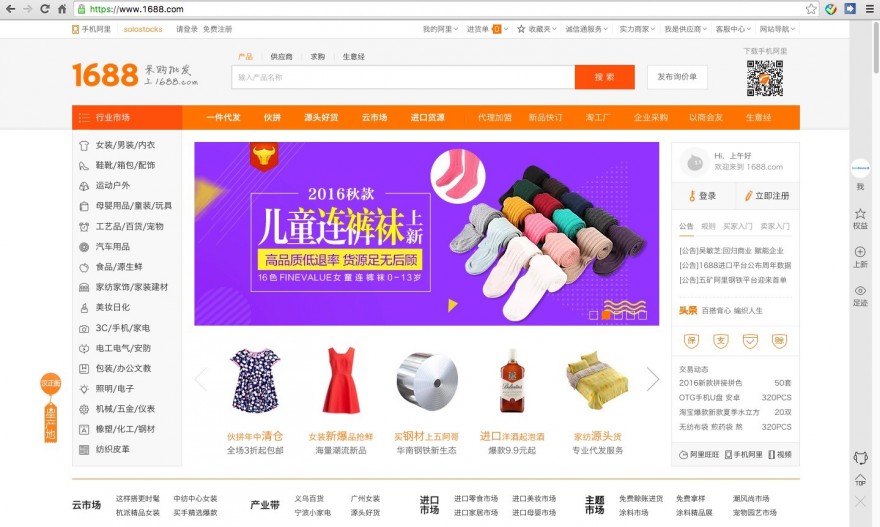
- Second, Create Solostocks’s online shop in 1688.COM
After the registration, you can access it with Solostocks.1688.com.
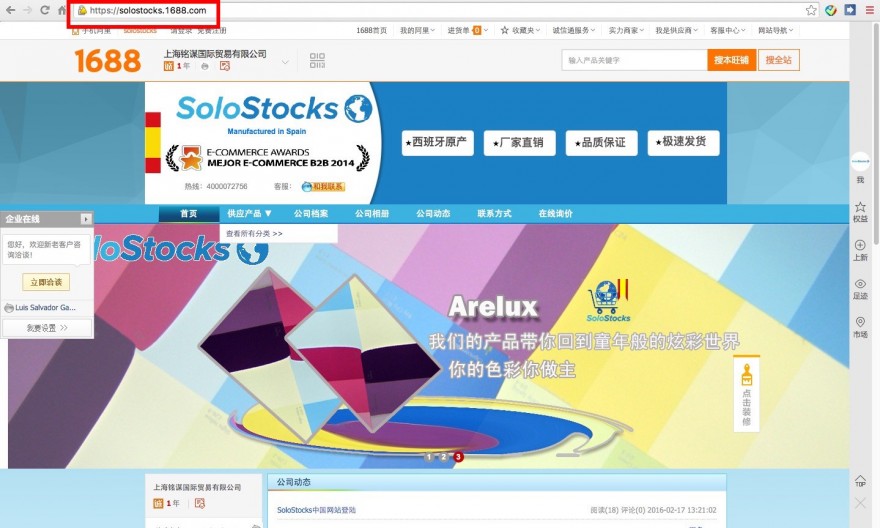
- Third, Optimization:
When the online shop settles down, we can optimize the traffic through strategies within Solostocks.1688.com. The internal optimization of the online shop could bring your company more traffics and leads.
From 2 OPEN, we suggest you six strategies to apply to leads generation, such as:
- Product release:
In proper way, product release can fulfill the product category and increase Page View (PV).
Product quantity is not the key point for B2B selling but is the product category, title and description. Remember the more detailed the information is, the more opportunities for searching there will be.

- Shop decoration:
Shop decoration is aiming to provide a good visibility to viewers: useful information in organization will fully convey to viewers and improve the CTR also display structure has to be recognizable and practical.
Key modules include logo, navigation, introduction, display, share/favorite, communication etc.

- Text content:
Text content includes all the product descriptions and introductions.
It is crucial to pay attention to Key-words combination: they will be the best SEO to boost traffics: the more key words are recorded, more exposures there will be.
Refined and targeted content can also lift the ranking and improve the user experience.

- Tool assistance:
Tool assistance from 1688.COM’s back office can facilitate Solostocks.1688.com promotion. It contains various functions to assist the system management, which provides a better performance in internal optimization.
Tools for managing product, KPI, finance, transaction and marketing would optimize the operation.
Here we explain you three detailed functions which we consider especially important:

By the way, there are a plenty other tools provided by 1688.COM that you can find. You just need to discover them all and find the one which better suits you!
- Secondary platform:
The secondary platform of 1688.COM is called baike.1688.com. It is professional and dedicated to provide customers the solutions and commercial knowledge in business by means of questions and answers to solve business problems.
In this business platform, users can get connections and share their experiences. Do not forget to:
– Use proper key words to find out the related questions
– Answer professionally to promote Solostocks.1688.com
– Enhance the account activity and develop the business
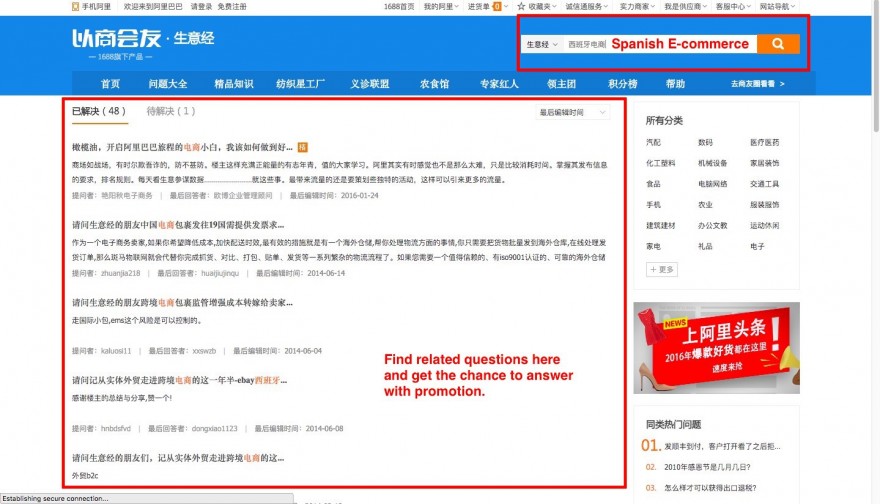
- Paid service:
Paid service in 1688.COM can effectively promote the brand and product in bidding ranking.
The most popular ways of SEM in 1688.COM are WXB (pay-per-click) and Diamond Booth (slideshow on the homepage). Both of them strongly facilitate the brand and product promotion in direct way.

Actually, 1688.COM provides various means for sellers to promote its sales. Here we summarize some main tips to implement the internal optimization in a comprehensive way to obtain the best results!
- Information sufficiency
Make sure the sufficient and high quality information can be provided to browsers.
- Effective transmission
Transfer the product or brand information in all directions to browsers accurately and immediately.
- Qualified images
High definition pictures can highlight the brand quality also beatify the online shop.
- Customer service
Keep the effective communication and CRM during the whole sales process.
- Ranking optimization
Paid service can provide the better performance in brand exposure by bidding ranking.
If you are interesting in doing B2B in China through a more native approach, 1688.COM would be the most effective and direct way to help you face to the Chinese customers.
Still interested?
Keep checking our blog and contact us if you have any questions. 2 OPEN will happily assist you!
This article was edited by Paula Vicuña.
Business Theory and Practice in China – Not what you’d expect
Have you ever asked somebody how to do something in China and gotten an unclear or contradictory answer? Worry no more my dear reader, getting to know things before actually doing them in China is extremely difficult, here is why!
Not all questions have a vague answer to them, we are mainly focusing on business related topics, to be more specific, new business models that are being implemented, for instance, WeChat account management, DSP advertising purchases, or cross-border e-commerce are among the main ones that seem to have a variety of answers to them.
Why? You might be wondering, well, these fields are fairly new and still need to mature a bit. This is the main reason why there is no general consensus yet, it basically comes down to who you are asking. A logistics company won’t give you the same answer as the Chinese Customs Administration, nor will an online e-commerce platform or a Chinese businessperson, everyone has a different perspective on the matter, finding out what works for you might be difficult.
In reality, nobody is 100% sure on how things should be done, in fact, it seems like everybody is experimenting with it. The information lacks, is unclear, or contradictory, so you ask yourself, what should I do in order to carry out my business in China?

Your first, and probably wisest option, would be to get in touch with 2 Open, we are used to deal with these types of problems all the time. Facing new challenges and pioneering is one our main strengths and we would be more than happy to help your business achieve its full potential.
Your second option would be to run a pilot test. Getting things right before actually starting is a smart thing to do. Try running some test orders and look at the problems that arise with its delivery process. This will not only give you the knowledge you need but will also let to know the experience you’ll be having later on. Even though this might not be as comfortable to do as it sounds, it certainly is the best way to go about it.
Apart form running this pilot test there is another important aspect you should keep in mind, that is trust. Uncertainty and risk taking are a part of these tests and having an honest trustworthy person on the other end is something that will help you solve any problems you might encounter. Trust issues within your working environment could harm the pace and results of your projects, this is something you might not want to take for granted.
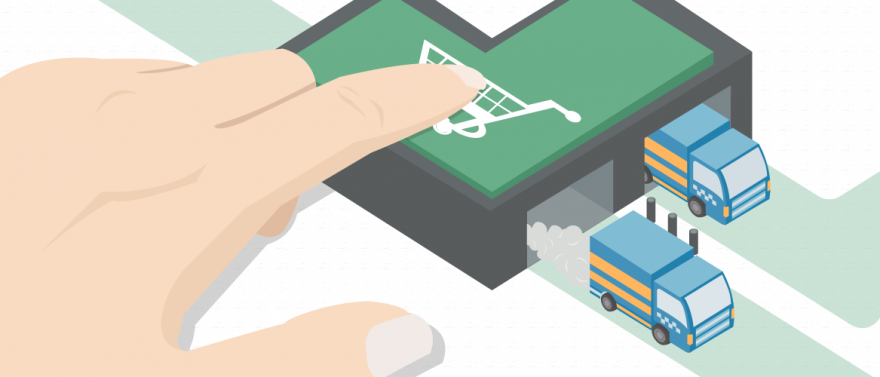
All in all, trust is not enough, you also need to be patient, getting things right requires time and effort. Getting ahead of yourself without the knowledge required could costs you some precious time and money. Plan things ahead and gather all the information needed in order to succeed in the volatile Chinese market.
At 2 Open we have the experience and knowledge to develop your business in China. We not only know how solve problems but we also take that uncertainty on your behalf. Our team is passionate and enthusiastic about every project, our goal is to understand our clients business needs in order to provide the best possible services. If you have any questions or require any information about our services, please do not hesitate in contacting us, our group of specialists will happily assist you.
Don’t forget to subscribe to our monthly Newsletter.
This article was edited by Andres Arroyo Olson from 2Open.
All you need to know about Ecommerce in China
The first quarter of 2016 is already behind us, are you still figuring out how to start your e-commerce business in China? For some of us e-commerce still feels like a new business model, however, China has long passed this stage, various data suggests that it has already become a traditional industry in China. Traditional or not, let us sort out the current e-commerce situation and forecast its areas of development.
Ecommerce is on its way to become a traditional industry in China
Ten years ago the ecommerce in China was brand new. Taobao was the most popular C2C online platform. At that time, people who had the technical skills and knowledge of search engines could get over 80% of return of investment on a Taobao shop. Nowadays, Taobao offers more than 1 billion products, has over 10 million sellers, and around 320 million active users. These huge numbers only come from one of Alibaba Group’s marketplace so you might be able to reckon the whole picture. After ten years high-speed development, China’s ecommerce is not a new industry anymore; its development is now as mature as the real estate or the catering industry.
Traditional industry vs Ecommerce
In recent years, the traditional industry has been strongly affected by the online market, some companies have managed to adapt their business to the new online scene, but some have failed at this task. This trend of transitioning from offline to online businesses will speed up this year, and although there are currently more traditional businesses than online ones, online businesses will eventually catch up.
It seems that both business models cannot co-exist, however, if the resourceful traditional industry would explore Chinese digital marketing and ecommerce solutions, they would be able to achieve better results with half the effort.

Develop a 020 (Online-to-Offline) business model
In coming years, online retailing will be a fully integrated part of the market, it will help companies grow, and sale more efficiently. On the other hand, they will also have to implement the offline part of it, a successful integration of a good O2O business will, without a doubt, thrive in market. Suning began handling deliveries for Alibaba, in order to push Tmall Supermarket into the massive market, and Jingdong is promoting Jingdong Daojia, all the actions from the leading Ecommerce companies indicate that the O2O model is inevitable to come.
Ecommerce in the rural areas
Last year ecommerce in rural areas had a rapid development. Alibaba made a long-term project to promote online shopping in order to expand its business coverage. The central government formally issued a document to help the promotion of rural ecommerce and facilitate the integration of online and offline. Alibaba, Jingdong and Suning are also pushing the development of ecommerce in rural areas so we should expect an huge increase this year.

Great development of CBEC (cross-border ecommerce)
Over the past 2 years, CBEC has become one of the most popular business models in China. It has given import business a lot of opportunities; moreover, since the Chinese middle class has grown considerably (first place in the world with over 100 million), it turns out to be a very profitable business. The main consumers are people between the ages of 30-40 and have great acceptance for foreign products, this will bring a lot of overseas ecommerce companies into the Chinese market.
Here at 2Open we specialize in ecommerce and digital marketing. Our goal is to understand our clients business needs in order to provide the best possible services. If you have any questions or require any information about our services, please do not hesitate in contacting us, our group of specialists will happily assist you.
This article was edited by Andres Arroyo Olson from 2Open.
It’s official! Taxation reform will start on April 8
On March 24, 2016, the Ministry of Finance of the People’s Republic of China released an article on its website to finally put an end to the on-going rumours. Turns out that all the gossips were right all along, so brace yourselves because the taxation reform for imported retail products through cross-border e-commerce is coming.
According to the article approved by the State Council, starting on the 8th of April 2016, China will implement the import tax policy for cross-border e-commerce retail sales (business to consumer, or B2C), and also adjust the tax policy on personal postal articles.
Currently, items for personal use are considered to be personal postal articles, these types of items represent a reasonable number of cross-border imported goods and will be taxed according to the new tax policy on personal postal articles. The new personal postal article tax is targeted on non-trade imported goods; it combines tariffs, import VAT and consumption tax. Generally speaking, the tax rates of personal postal article tax will be lower than those of imported goods for trade.
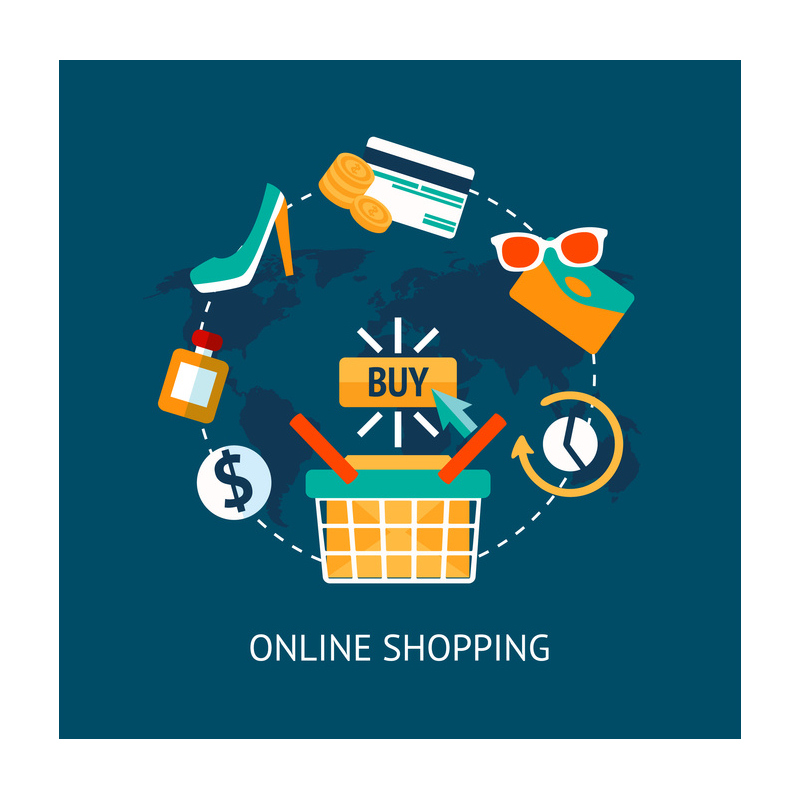
Products for cross-border e-commerce retail sales are imported through postal channels and these work differently than the traditional trade of files and correspondences, this is the main reason why unfair competition exists between cross-border e-commerce retail imports and general trade imports within the same category. This is the main reason why cross-border e-commerce imported goods will be considered as merchandise and charged with tariffs, import VAT and consumption taxes.
As a response to consumer’s reasonable demand, the single transaction limit for cross-border e-commerce retail goods will be increased from 1000 RMB to 2000 RMB, furthermore, the annual limit will also be increased to 20000 RMB. For cross-border e-commerce retail goods within the 2000 RMB price limit the tariff will be 0% with an import VAT and consumption tax of 70 % of the current statutory tax. As for the goods that surpass the single transaction or annual limit, they will be charged with full taxation under the general trade model.
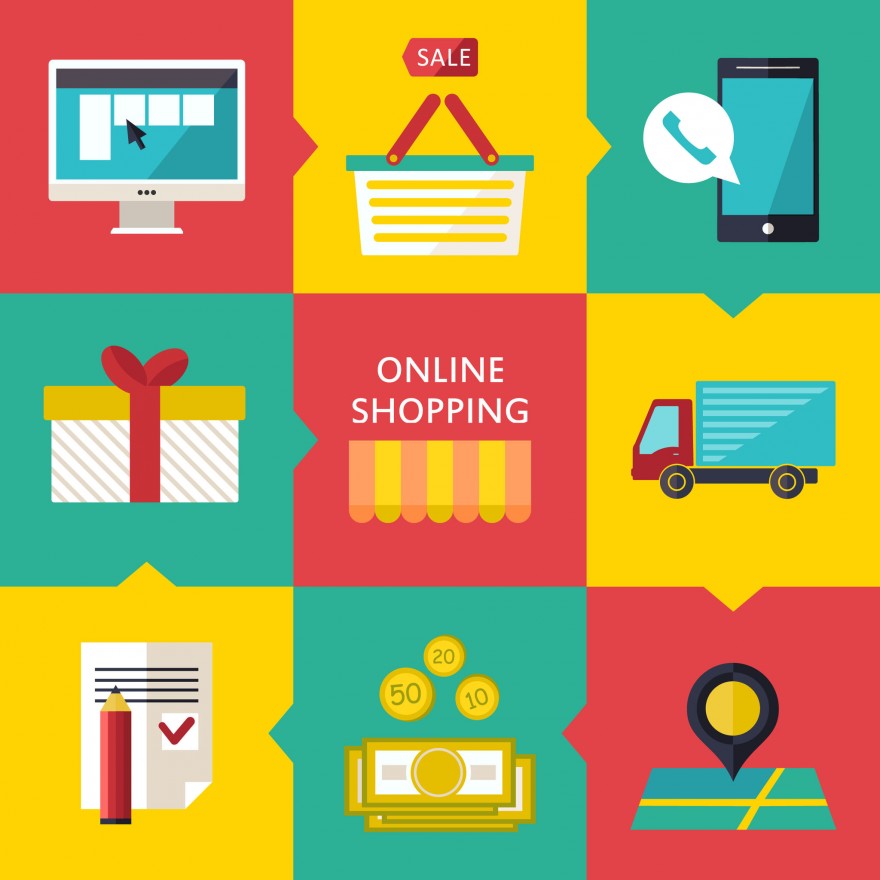
Taking into account current regulatory conditions, for the moment, only cross-border e-commerce retail imports that can successfully provide trading, payment, logistics and other related electronic information, will be taken under the scope of the new policy. Personal belongings and imported goods that are unable to provide related electronic information will remain subjects to current regulations. Meanwhile, to optimize the taxation structure, simplify customs declaration and tax payments, and improve customs clearance efficiently for passengers and customers, China will adjust tax policies on personal postal articles. The changes include a reduction from the current four tax items (tax rates: 10%, 20%, 30% and 50%) to three. Under the new policy, tax item 1 is mainly for commodity from MFN with zero tariffs; tax item 3 is mainly for high-end commodity with consumption tax; the rest will be subject to tax item 2. Tax rates for the three new tax items will be 15%, 30% and 60% respectively.
We will have to wait and see how this affects cross-border e-commerce in the following years. Any enquiries you may have about how to increase sales and manage a successful ecommerce business model do not hesitate in contacting us. Our group of specialist will be more than happy to assist you.
This article was edited by Andres Arroyo Olson from 2Open.
References
http://gss.mof.gov.cn/zhengwuxinxi/gongzuodongtai/201603/t20160324_1922972.html
What you need to know about Cross-Border ecommerce for China
Nowadays cross-border ecommerce is in the rise in China. It seems to be a viable and legal way to import or export products into or out of China avoiding significant tariffs and quotas. Apart from the traditional model of cross-border ecommerce, that is, overseas online shopping, we have classified 4 specific operational models of cross-border ecommerce according to their different business schemes.
- Overseas online shopping
- Direct delivery platform
- Self-support B2C model
- Guide and rebate shopping model
1. Overseas online shopping
Overseas online shopping is perhaps the one that is most familiar to Chinese consumers. It is a sort of procurement service for people who want to buy the overseas products. Consumers purchase the products from foreign retailers or individuals on web pages or mobile apps, and then they get the product by transnational logistics. There are two major ways so accomplish this.
Online shopping platforms
One of the main points an online shopping platform has to do is to attract third-party sellers who meet the logistics requirements. Sellers settled in the platform usually have overseas purchasing power; they regularly purchase the specific product based on consumers’ needs and after the order is received from the customer they transport or mail the product directly to China. This is a typical example of a C2C model, the online platform profits from access fees, add-value services, and transaction fees imposed to the seller.
Representative platforms: G.TAOBAO.COM/JD WORLDWIDE/USASHOPCN.COM
Wechat “moments”
“Moments” in Wechat is becoming a popular way for promoting products online. Although its warranty is mostly based on social relationships, fraud could also occur. With customs restrictions the service would be regarded as smuggling, so there still time to wait for the integration of it in the overseas online shopping environment.
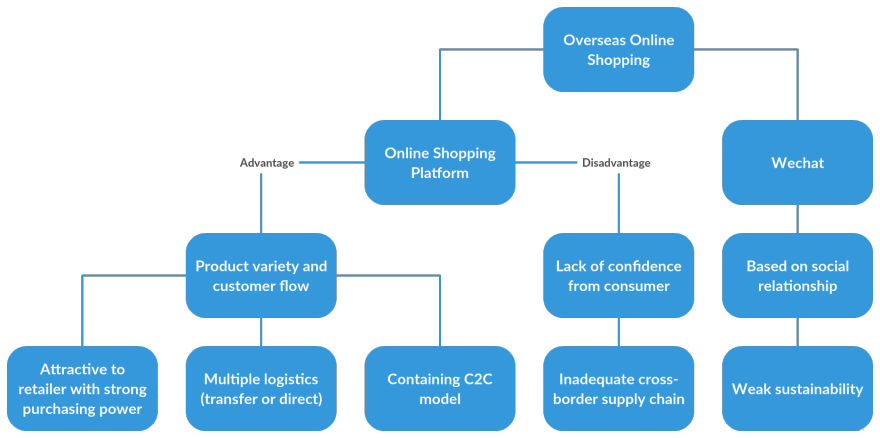
2. Direct delivery platform
Direct delivery platform, also named “dropshipping”, is a model in which the ecommerce platform sends the order from the customer to the manufacturer or wholesale directly, then the latter delivers the product to the customer according to the information provided, it is important to notice that the product is sold with its retail price. Because the end-supplier is the brand vendor/factory, this model could be considered a B2C model. In this case, most of the profit for the direct delivery platform comes from the price difference between the retail price and the wholesale price.
Representative platforms: TMALL.HK/YMATOU.COM/KJT.COM
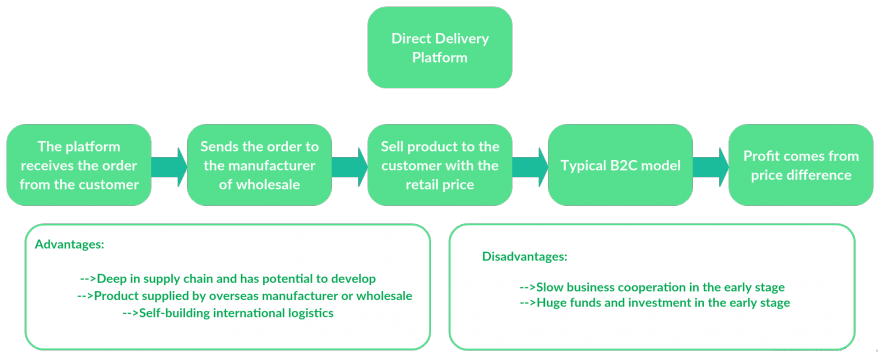
3. Self-support B2C model
When it comes to the self-support B2C model, most products need to be prepared by the online platform before shipping. There are two types of self-support B2C platforms:
Comprehensive self-support B2C platform
For now the only leading comprehensive self-support B2C platform is YHD.COM, which is supported by Amazon and Wal-Mart.
Vertical self-support B2C platform
This model means that the platform focuses more on a certain area to choose the product category, such as food, luxury product, cosmetic or clothing.
Representative platforms: WOMAI.COM/MIA.COM/SASA.COM
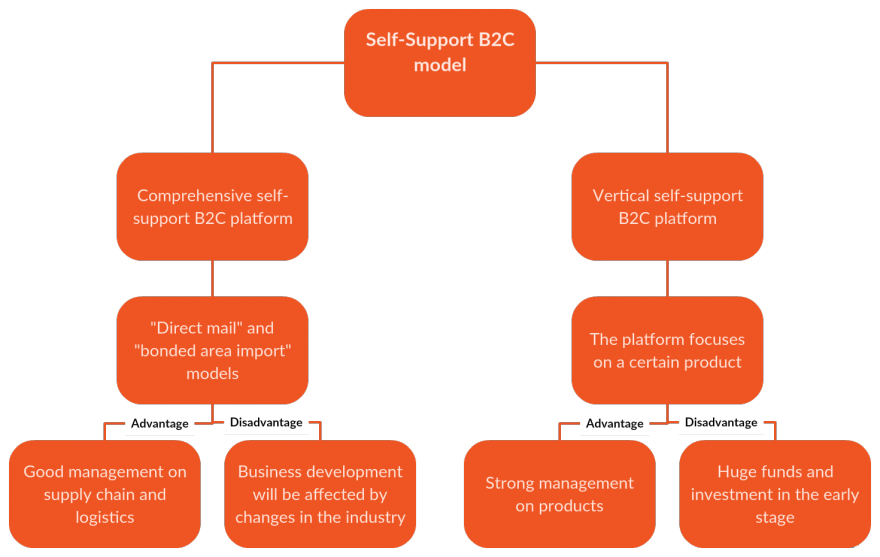
4. Guide and rebate shopping model
For a simpler understanding we will split this topic into two parts, the conduction part and the transactional part. Conduction refers to all the means and channels through which customers are led to the product or service: news, online forums, blogs, or ads, all constitute a part of conduction and focus on attracting the consumer. As for the transactional part it involves the submission of the order to an overseas retailer and any monetarily transaction that comes with it.
In order to guarantee product quality and adequacy, this types of platforms usually cooperate with an overseas ecommerce group. Normally the guiding/rebating platform in China joins their pages with the overseas ecommerce pages and once the transaction is done, the overseas ecommerce gives about 5%-15% commission rebate to the Chinese platform. Later the guiding/rebating platform refunds part of the commission to the customer.
One of the main advantages of this model is that the integration of new products and the development of the business itself are relatively simple. Also, because it is a joint between two online platforms, the conduction part results more rewarding since both parties can attract a huge number of customers in a short amount of time and meet the customers’ demands.
As for the disadvantages, long-term projects might be a bit more difficult to carry out since the business depends on two separate ecommerce platforms. Management of the supply chain could also become a problem due to distance and time zone differences.
Representative platforms: ETAO.COM/HAITAOCHENG.COM/123HAITAO.COM

Cross-border negotiations seem to bring a lot of advantages if one is intending to do business with China. Choosing the right model for your business’ needs is crucial for the growth and success of it. Here at 2Open we have plenty of experience with these types of business models and our team of specialists will be more than happy to assist you with any enquiry that you might have.
This article was edited by Andres Arroyo Olson from 2Open.
General situation of cross-border e-commerce in China
General situation of cross-border e-commerce in China
2014 is called by many the year of beginning of cross-border e-commerce in China. Traditional retailers, domestic and oversea e-commerce giants, start-ups, logistic service providers and distributors have all joined this battle trying to get a share of the cake.
No doubt this is a time of challenges and opportunities, getting to know the current situation is helpful to forecast a slice of the future.
So what do we know about the positive factors that lead the cross-border e-commerce in China continue to grow?
A window period of dividend policy
With the official documents N°56 and N°57, issued by General Administration of Customs of People’s Republic of China (PRC), the cross-border e-commerce has finally been authorized at 2014 in China. The”6+1” testing cities (Shanghai, Chongqing, Hangzhou, Ningbo, Zhengzhou, Guangzhou, Shenzhen) have since then enjoyed the tax reduction for cross-border e-commerce, which means products purchased through cross-border e-commerce channel will only be charged with personal postal articles tax, instead of the “customs + added-value tax + consumption duty” for common import trade. Thanks to policy incentives, which is aiming at bringing the oversea consumption back to mainland China, cross-border e-commerce has witnessed rapid growth.
Huge potential of customer needs
Nielsen recently issued the China’s E-commerce Industry Development and Hangzhou Index White Paper, suggesting that “affluent and well-educated young people make up the majority of cross-border online shoppers and the cross-border online shopping features at low frequency and higher spending per order compared to domestic online shopping”.
According to the statistics from General Administration of Customs and Research Center of China’s e-commerce, the size of transactions and the user’s volume have tremendously increased in these couple of years. The size of transactions grows from ten billion to hundred billion and some predictions show that it will reach trillion level in 2018.
Not everything is favorable, we are still facing many challenges
The tax reduction policy will not last for long because the government has to find a balance between the traditional trade and the cross-border e-commerce. The uncertainty of policy may affect every segment of cross-border e-commerce in China.
The immaturity of logistics and customs clearance system, the slow process makes the after sales services can’t be guaranteed. In the future shopping experience needs to be bettered with a smoother customs’ process.
The possibility of directly signing a contract between a foreign brand and a Chinese cross-border e-commerce platform is remote, therefore cross-border e-commerce platforms often use combined supply chain, which is unstable and will lead the price of product hard to be controlled. The one has the ability to get through each segment on the supply chain will be the first to take the market.
Currently, not a single cross-border e-commerce platform is widely accepted by customers, major player and start-ups are basically at the same starting line. The early stage development relies more on policies, lower price, richness of products, but as time goes, the competition will be back to the retail level – brand, supply chain and customer services.
We do still have the possibility to change the game, don’t you think?
Check the original Chinese article here
References:







